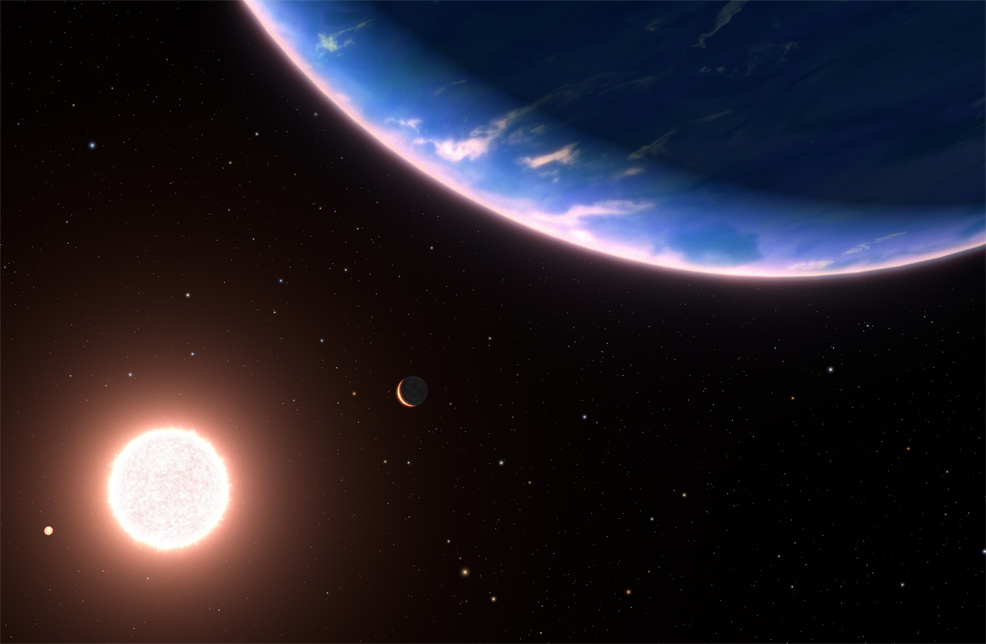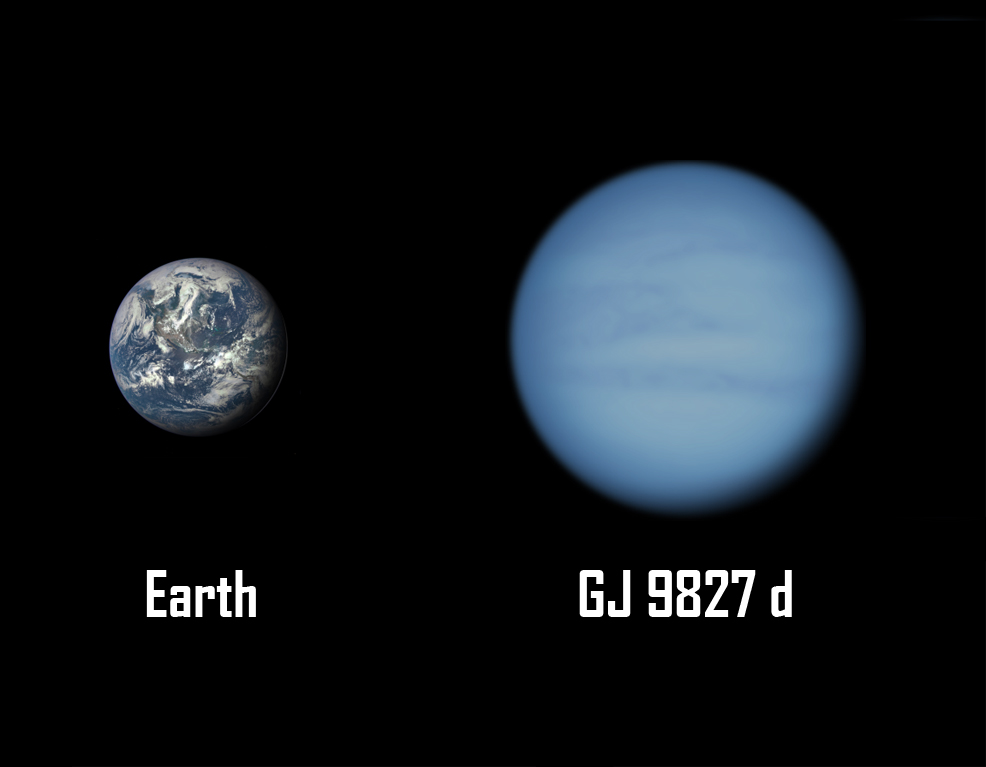
31st January 2024 Smallest exoplanet to hold water vapour Astronomers have determined that GJ 9827 d, at only twice the diameter of the Earth, is the smallest exoplanet yet found to hold water vapour in its atmosphere.
Previous studies of large exoplanets have detected water vapour. This month, however, NASA astronomers have confirmed its presence in the atmosphere of a much smaller planet. The world in question is designated GJ 9827 d and is only 2.02 times the diameter of Earth. It orbits a small K-type main-sequence star with about 60% of our Sun's mass and size, located 97 light years away in the constellation Pisces. The planet lies in close proximity to its star – about 1/7th of the distance between Mercury and our Sun, taking just six days to complete an orbit – with a hot, steamy temperature of 427 °C (800 °F) making it unsuitable for life. Nonetheless, this discovery is highly notable and could lead to even smaller exoplanets being confirmed to support water; perhaps in liquid form and within a system's habitable zone. "Water on a planet this small is a landmark discovery," said Laura Kreidberg, co-principal investigator from the Max Planck Institute for Astronomy in Heidelberg, Germany. "It pushes closer than ever to characterising truly Earth-like worlds."
Her team used the Hubble Space Telescope – still going strong after 30 years – to observe 11 transits over three years. These are events in which the planet crosses in front of its star. During each transit, starlight is filtered through the planet's outer atmosphere, with extremely precise measurements revealing the spectral fingerprint of water molecules. At this stage, it remains too early to tell whether only a small amount of water vapour is present, or if the planet is dominated by much larger quantities. Observations conducted by the James Webb Space Telescope (JWST) or next-generation observatories may confirm this. In one scenario, the planet could be clinging to a hydrogen-rich atmosphere laced with water, making it a "mini-Neptune". In another scenario, it could be like a hotter version of Jupiter's moon Europa, according to Björn Benneke, Professor of Astronomy from the Université de Montréal, Canada: "The planet GJ 9827 d could be half water, half rock. And there would be a lot of water vapour on top of some smaller rocky body," he said. "Observing water is a gateway to finding other things," said Thomas Greene, astrophysicist at NASA's Ames Research Center, California. "This Hubble discovery opens the door to future study of these types of planets by NASA's James Webb Space Telescope. JWST can see much more with additional infrared observations, including carbon-bearing molecules like carbon monoxide, carbon dioxide, and methane. Once we get a total inventory of a planet's elements, we can compare those to the star it orbits and understand how it was formed."
Comments »
If you enjoyed this article, please consider sharing it:
|
||||||








